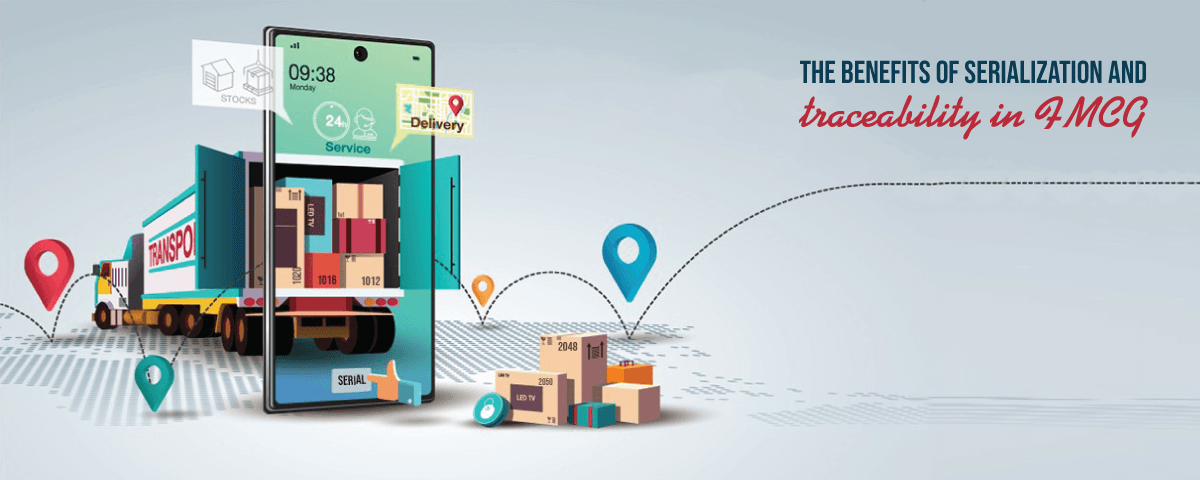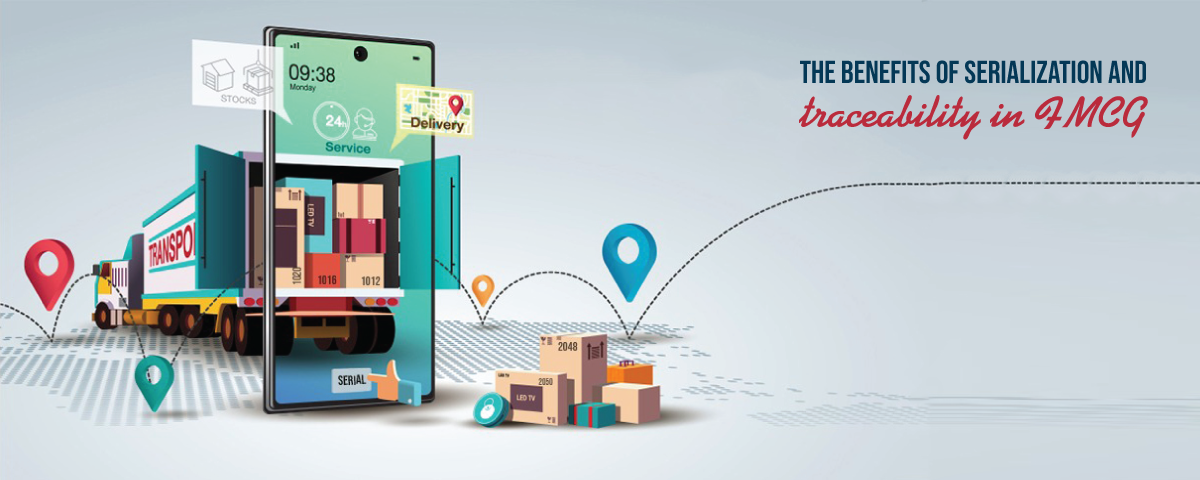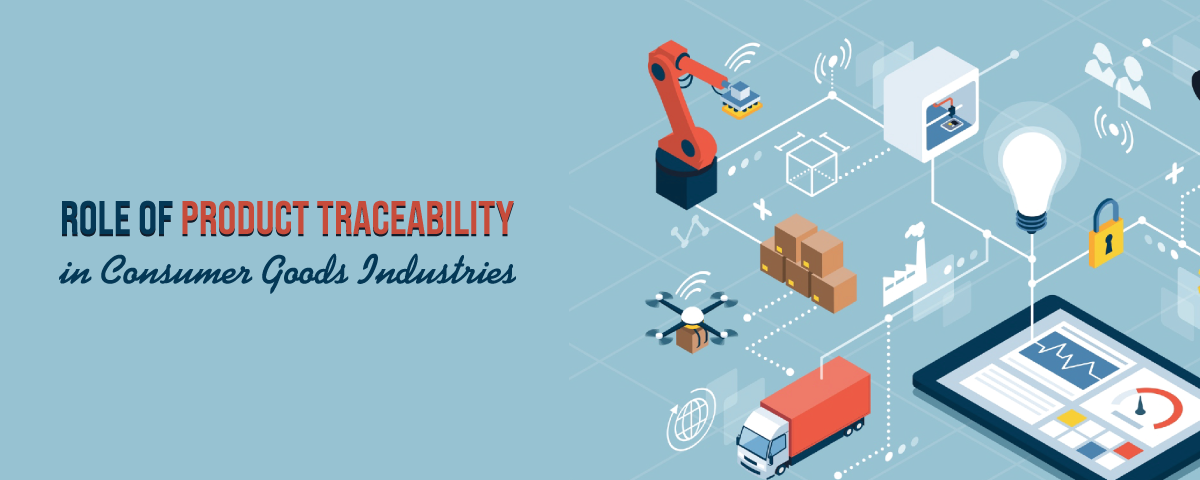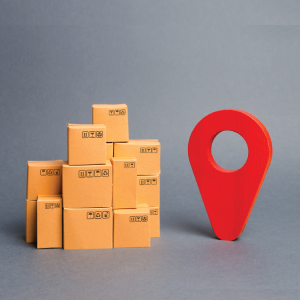In the FMCG sector, the use of a serialization system, as well as a track and trace system, helps in maintaining transparency with the customer and optimizes the processes. The use of these systems helps in improving customer services. In addition to food safety practices and quality assurance testing, traceability, and serialization of FMCG products are of utmost importance for large-scale and small-scale businesses in the sector.
The benefits FMCG companies draw from the Product Serialization system

The use of product serialization systems can improve the operational efficiency of the FMCG companies for a better supply of safe and clean food products. Serialization systems can support the improvement of logistics and transport inside the FMCG sector.
Recognition of a low-quality product
The use of an end-to-end track and trace system helps in monitoring the quality of the FMCG product throughout the supply chain. The quality of short shelf life FMCG products can fluctuate easily and needs monitoring. Traceability and serialization step in to make a constant monitoring of product quality possible.
Serialization allows each partner in the supply chain to track product at every step, from point of manufacture to the moment it’s in the consumers hands. In addition, when the product is returned, the serial number can be used on all shipping documents to provide information on status and the reason for the return. The information can be of great value in determining whether the product has any quality problems.
Product serialization also helps in the identification of the fault or issue with recalled products so that the same issue is not repeated in future batches.
Therefore, the traceability of products helps the manufacturing companies too
Smooth flow of recalled products
Non serialized products can block the supply chain because companies, employees, and customers lose sight of the products and their status in the chain. Without the use of a proper track and trace system, the productivity of the supply chain goes down. When the FMCG products are serialized, the customers can get more information about the products they choose from the supermarket shelves. The use of product serialization codes also helps smooth the backflow of products to the seller because the products are easily tracked, and the logistics process can be optimized accordingly.
Demand management
The use of a track and trace system by an FMCG company can help increase the scope of demand management. The tracking of products with the help of the codes can help improve supply to the right demand points. The increased traceability of the products helps speed up the supply speed so that the demand in grassroots level stores is easily met within a certain timeframe.
Half of the business in the FMCG sector depends on supplying to the demand at the right time. Now, demand might not arise from a single audience segment all the time. Depending on the demand for the products over a period, the company must supply products to the stores selling them.
Traceability of products and the use of end-to-end track and trace systems help in demand management across different submarkets and stores. The use of product serialization codes can help the organization know which products have gone to which area. The implementation of these solutions helps in improving demand management and other processes linked with the supply chain.
Better impact on sales management and wholesale chains
When it comes to wholesale chains and sales dealerships, the use of serialization codes can help the company not only track the activity of the product down the logistics chain but also improves the prospect of the sales by letting the company analyze how the products are performing in the ground-level market.
The company can track the sales performance of different products and know why the performance of certain products is getting affected negatively. The use of trace systems provides crucial information to the marketing and sales team. The information can be used to control the sales funnel and the products that go out to the stores.
For example, the company can focus on either improving the quality of low-performing products or increasing the supply of high-performing products so that the revenue and profits increase further. The information collected from the product serialization codes can be used to analyze product performance and alter sales and marketing strategies for the company. The commercial strategy can be tweaked for specific results on the marketing and sales front.
The use of track and trace systems and serialization codes can have benefits for the business management sector, as well as the quality improvement sector in the FMCG industry. The companies can collect crucial data, analyze and create strategies for future industry benchmarks so that customers are satisfied and there is strong brand recall. The information collected can also be used to create a new production system and flow for better product quality in the long run.
The Benefits of Product Serialization and Traceability in FMCG
In the FMCG sector, the use of a serialization system, as well as a track and trace system, helps in maintaining transparency with the customer and optimizes the processes. The use of these systems helps in improving customer services. In addition to food safety practices and quality assurance testing, traceability, and serialization of FMCG products are of utmost importance for large-scale and small-scale businesses in the sector.
The benefits FMCG companies draw from the Product Serialization system
The use of product serialization systems can improve the operational efficiency of the FMCG companies for a better supply of safe and clean food products. Serialization systems can support the improvement of logistics and transport inside the FMCG sector.
Recognition of a low-quality product
The use of an end-to-end track and trace system helps in monitoring the quality of the FMCG product throughout the supply chain. The quality of short shelf life FMCG products can fluctuate easily and needs monitoring. Traceability and serialization step in to make a constant monitoring of product quality possible.
Serialization allows each partner in the supply chain to track product at every step, from point of manufacture to the moment it’s in the consumers hands. In addition, when the product is returned, the serial number can be used on all shipping documents to provide information on status and the reason for the return. The information can be of great value in determining whether the product has any quality problems.
Product serialization also helps in the identification of the fault or issue with recalled products so that the same issue is not repeated in future batches. Therefore, the traceability of products helps the manufacturing companies too.
Smooth flow of recalled products
Non serialized products can block the supply chain because companies, employees, and customers lose sight of the products and their status in the chain. Without the use of a proper track and trace system, the productivity of the supply chain goes down. When the FMCG products are serialized, the customers can get more information about the products they choose from the supermarket shelves. The use of product serialization codes also helps smooth the backflow of products to the seller because the products are easily tracked, and the logistics process can be optimized accordingly.
Demand management
The use of a track and trace system by an FMCG company can help increase the scope of demand management. The tracking of products with the help of the codes can help improve supply to the right demand points. The increased traceability of the products helps speed up the supply speed so that the demand in grassroots level stores is easily met within a certain timeframe.
Half of the business in the FMCG sector depends on supplying to the demand at the right time. Now, demand might not arise from a single audience segment all the time. Depending on the demand for the products over a period, the company must supply products to the stores selling them.
Traceability of products and the use of end-to-end track and trace systems help in demand management across different submarkets and stores. The use of product serialization codes can help the organization know which products have gone to which area. The implementation of these solutions helps in improving demand management and other processes linked with the supply chain.
Better impact on sales management and wholesale chains
When it comes to wholesale chains and sales dealerships, the use of serialization codes can help the company not only track the activity of the product down the logistics chain but also improves the prospect of the sales by letting the company analyze how the products are performing in the ground-level market.
The company can track the sales performance of different products and know why the performance of certain products is getting affected negatively. The use of trace systems provides crucial information to the marketing and sales team. The information can be used to control the sales funnel and the products that go out to the stores.
For example, the company can focus on either improving the quality of low-performing products or increasing the supply of high-performing products so that the revenue and profits increase further. The information collected from the product serialization codes can be used to analyze product performance and alter sales and marketing strategies for the company. The commercial strategy can be tweaked for specific results on the marketing and sales front.
The use of track and trace systems and serialization codes can have benefits for the business management sector, as well as the quality improvement sector in the FMCG industry. The companies can collect crucial data, analyze and create strategies for future industry benchmarks so that customers are satisfied and there is strong brand recall. The information collected can also be used to create a new production system and flow for better product quality in the long run.













